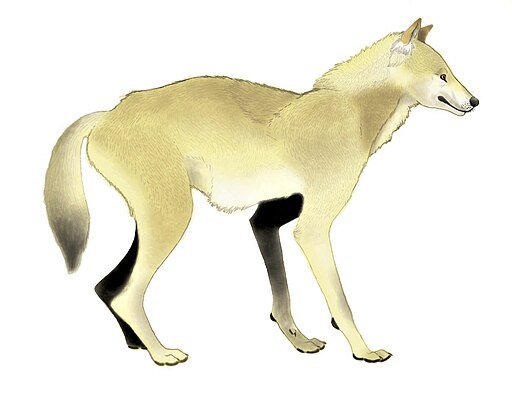Our dogs and their evolution
Six million years ago, the planet began to cool. Ice sheets formed over Antarctica and Greenland. Ice from the North Pole spread over northern Europe and North America. In Africa, the climate in the Great Rift Valley became dry. Some arboreal primates adapted to life in the tropical grasslands. They evolved bipedalism, tamed fire, learned to hunt, and avoided becoming prey themselves. They became what we see today in the mirror: Homo sapiens.
Moca, our dog
Our dogs´ ancestors 6 MYA
At about the same time our ancestors began descending from the trees, North America was home to the animal that would later become the first canid fossil, Canis ferox, a coyote-sized member of the wolf family. Nobody could have imagined that Homo sapiens and the descendants of Canis ferox would become the best of friends.
Our dogs´ ancestors 2.5 MYA
Three and a half million years passed, and the glaciation intensified. The ice sheetsreached a thickness of three km. Global sea levels dropped, connecting Siberiaand Alaska through Bering Strait. The ancestors of coyotes and wolves migrated from the Americas to Asia and Europe via this thin strip of land.
Our dogs´ ancestors 1.75 MYA
At the turn of the last century, a 1.75-million-year-old fossil of Homo erectus and the perfect skull of Canis etruscus were discovered in Georgia, at the intersection of Eastern Europe and Western Asia. This finding suggests that the ancestors of humans and dogs already co-existed.
Sketch of Canis etruscus
Our dogs´ ancestors 1 MYA
Today’s domestic dog, Canis lupus, appears in the fossil record in Alaska one million years ago and in Europe 500,000 years ago. Humans co-evolved with dogs. Our ancestors benefitted from the partnership because dogs make good guardians, barking in the presence of danger. Dogs, in turn, benefitted from the food debris that collected near human settlements. Early humans domesticated wolves; the domestic dog evolved as they selected for the more docile and attractive individuals.
Our dogs 10K years ago
The hundreds of dog breeds that exist today are the product of artificial selection. Humans selected for the many desirable characteristics we see in our dogs for over 10,000 years. Without variation in early dog populations, this would not have been possible. Variations in size, color, shape, and behavior made dog breeding a successful enterprise. Furthermore, these trait variations were the result of inherited genetic mutations. The fact that so many distinctive dog breeds were created in such a short time is impressive.
If it was possible to accomplish this in 10,000 years through artificial selection, it is easy to understand that even minor variations may arise by natural selection at intervals 100, 1,000, or 10,000 times longer.
Photo by Mahmoud Ayad






